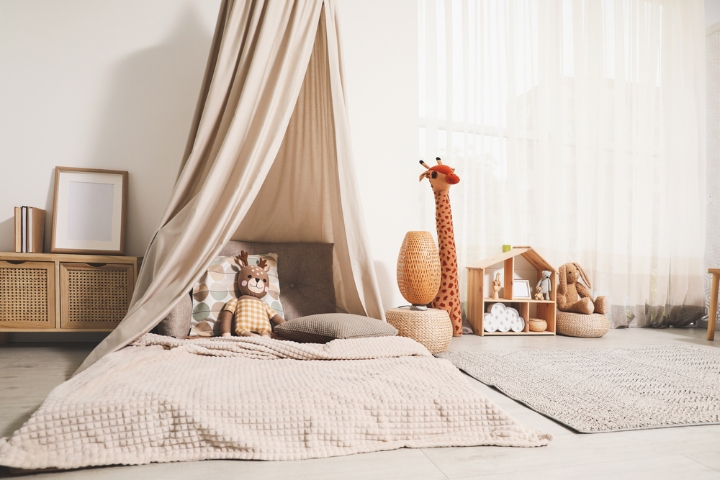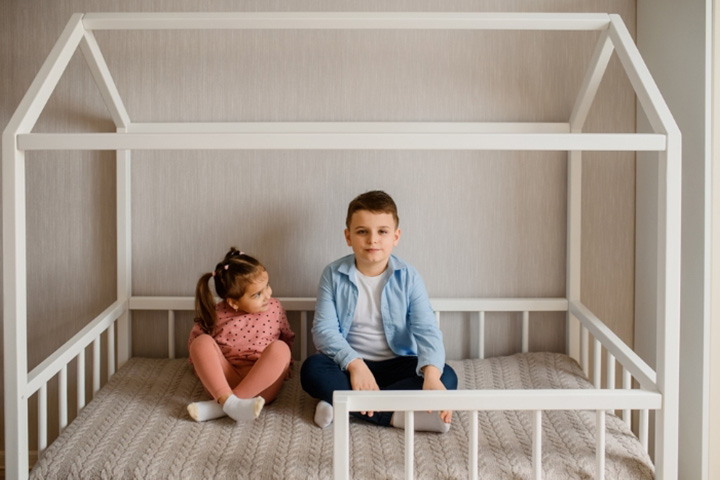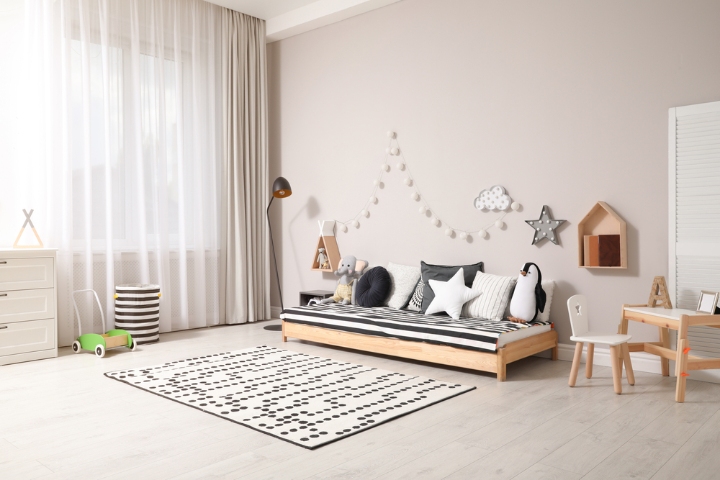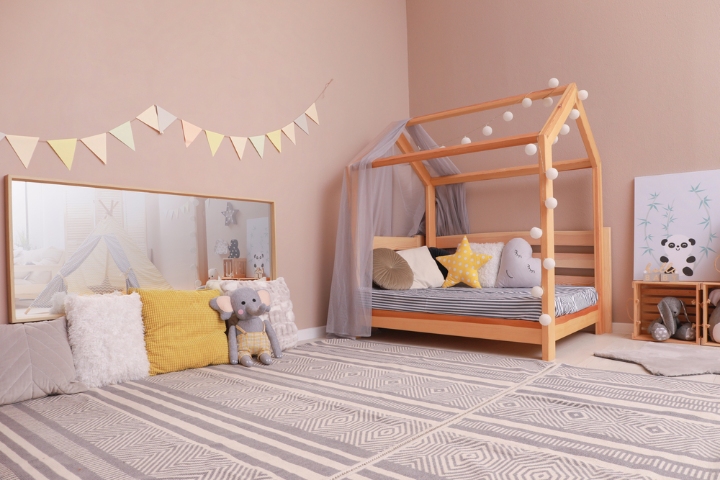
Image: Shutterstock
As a parent, your primary concern is ensuring that your child remains safe. One of the key aspects to take care of in this regard is choosing their sleeping arrangements. While the number of available options can be a bit overwhelming, worry not. In this article, we will be focusing on the importance of floor beds, a sleeping arrangement for children that is gaining popularity quickly. We will discuss the benefits of using a floor bed for your child and will also shed light on the appropriate age for shifting your child to a floor best. Read on to know more!
The Story Behind Montessori Floor Beds
Image: Shutterstock
The concept of Montessori floor beds originates from the educational philosophy developed by Dr. Maria Montessori. Her approach emphasizes independence, self-discovery, and hands-on learning for children. In the context of sleeping arrangements, Montessori advocates for floor beds as a way to empower children to explore their environment safely.
Benefits Of A Floor Bed
Image: Shutterstock
1. It Helps A Child Develop Gross Motor Skills And Body Awareness
Floor beds allow babies and toddlers to move freely in a safe space. As they learn to roll over, crawl, and eventually walk, these beds provide opportunities for them to develop their gross motor skills and body awareness.
2. It Helps Them Develop Their Sleep Independence
Traditional cribs can limit a child’s ability to self-soothe and fall asleep independently. Floor beds encourage children to learn to put themselves to sleep, fostering a sense of autonomy and self-confidence.
3. It Can Boost Your Child’s Confidence And Sense Of Self
When your child gets the freedom to move in and out of their bed independently, they naturally develop a sense of confidence. Moreover, they also feel more in control of their environment. This ultimately leads to an increased sense of self-esteem and accomplishment.
4. It Creates A Space For Bonding
Floor beds also help to develop a nurturing parent-child relationship. When your child is on their floor bed, you can easily interact with them at eye level, fostering stronger emotional bonds.
5. It Is Easy To Put Together And Affordable
Floor beds are typically simple, with a mattress directly on the floor or a low bed frame. This minimalistic approach is cost-effective and easy to set up.
The Appropriate Age For A Floor Bed
Image: Shutterstock
While floor beds offer numerous advantages, it’s essential to consider the appropriate age for transitioning your child to one. Here are some guidelines:
1. Infants
For newborns and very young babies, traditional cribs or bassinets are recommended, as they provide a more secure sleeping environment. Transitioning to a floor bed is generally considered safe once your baby is old enough to roll over independently and has reached an age where they are no longer at risk of becoming trapped between crib slats.
2. Toddlers
Many parents choose to transition their children to a floor bed between the age of 12 to 18 months, once the children have developed the motor skills necessary to safely navigate the floor bed and get in and out of it independently.
Best Practices For Floor Bed Safety
Image: Shutterstock
Ensuring the safety of your child on a floor bed is paramount. Here are some best practices to follow:
1. Childproof The Room
Before introducing a floor bed, childproof the room to eliminate potential hazards. Secure electrical outlets, remove small objects, and ensure that windows and furniture are safely anchored.
2. Use A Firm Mattress
Choose a firm, comfortable mattress that fits the bed frame snugly. Avoid soft or fluffy bedding, as it poses a suffocation risk.
3. Place The Bed Away From Hazards
Position the floor bed away from windows, cords, and any other potential dangers. Make sure there are no sharp or hard objects nearby that could pose a risk to your child.
4. Supervise Closely At First
Initially, supervise your child closely as they adjust to the floor bed. This allows you to monitor their safety and intervene if necessary.
5. Install A Baby Gate
If the room has a door that leads to stairs or other areas that could be unsafe, install a baby gate to restrict access.
6. Teach Safe Sleeping Practices
Educate yourself on safe sleep guidelines, such as placing your baby on their back to sleep and avoiding the use of pillows, blankets, or stuffed animals in the sleeping area.
7. Check For Cleanliness
Keep the area around the floor bed clean and free from dust, allergens, and pet hair that could affect your child’s sleep quality.
Floor beds offer a safe and child-centered sleep arrangement. However, as a parent, it is totally up to you to decide the best sleeping arrangement for your child. If you are going with floor beds, keep in mind the basic safety practices. This will ensure that your child remains safe and also enjoys a peaceful night of sleep.
















